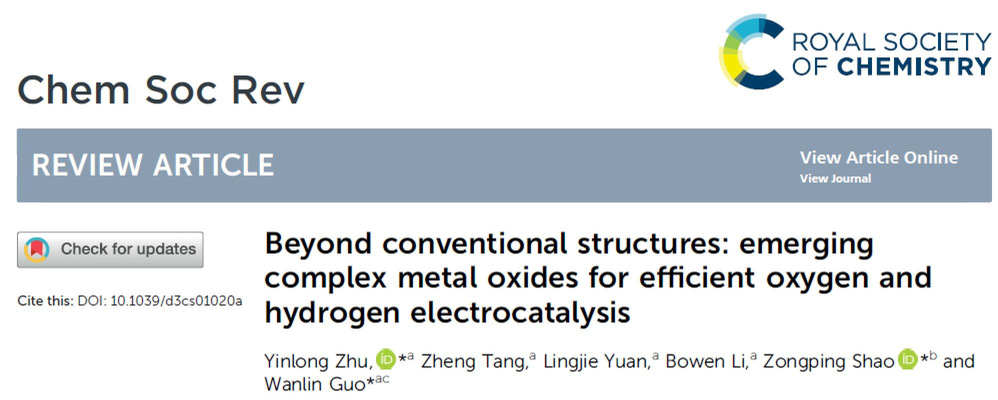Yinlong Zhu*, Zheng Tang, Lingjie Yuan, Bowen Li, Zongping Shao* and Wanlin Guo*

Abstract
The core of clean energy technologies such as fuel cells, water electrolyzers, and metal–air batteries depends on a series of oxygen and hydrogen-based electrocatalysis reactions, including the oxygen reduction reaction (ORR), oxygen evolution reaction (OER) and hydrogen evolution reaction (HER), which necessitate cost-effective electrocatalysts to improve their energy efficiency. In the recent decade, complex metal oxides (beyond simple transition metal oxides, spinel oxides and ABO3 perovskite oxides) have emerged as promising candidate materials with unexpected electrocatalytic activities for oxygen and hydrogen electrocatalysis owing to their special crystal structures and unique physicochemical properties. In this review, the current progress in complex metal oxides for ORR, OER, and HER electrocatalysis is comprehensively presented. Initially, we present a brief description of some fundamental concepts of the ORR, OER, and HER and a detailed description of complex metal oxides, including their physicochemical characteristics, synthesis methods, and structural characterization. Subsequently, we present a thorough overview of various complex metal oxides reported for ORR, OER, and HER electrocatalysis thus far, such as double/triple/quadruple perovskites, perovskite hydroxides, brownmillerites, Ruddlesden–Popper oxides, Aurivillius oxides, lithium/sodium transition metal oxides, pyrochlores, metal phosphates, polyoxometalates and other specially structured oxides, with emphasis on the designed strategies for promoting their performance and structure–property–performance relationships. Moreover, the practical device applications of complex metal oxides in fuel cells, water electrolyzers, and metal–air batteries are discussed. Finally, some concluding remarks summarizing the challenges, perspectives, and research trends of this topic are presented. We hope that this review provides a clear overview of the current status of this emerging field and stimulate future efforts to design more advanced electrocatalysts.
DOI: https://doi.org/10.1039/D3CS01020A